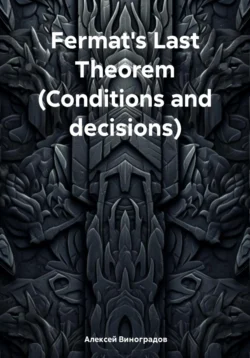Fermat′s Last Theorem (Conditions and decisions)

Нет в наличии
Алексей Виноградов
Тип: электронная книга
Жанр: Математика
Язык: на русском языке
Стоимость: 299.00 ₽
Статус: Нет в наличии
Издательство: Автор
Дата публикации: 24.10.2024
Отзывы: Пока нет Добавить отзыв
О книге: The book is devoted to the problem of solving some indeterminate equations. It is known that at present the search for an elementary solution to Fermat′s Last Theorem has been unsuccessful and cannot be considered completed. This work answers this question. The book provides possible evidence made by researcher.